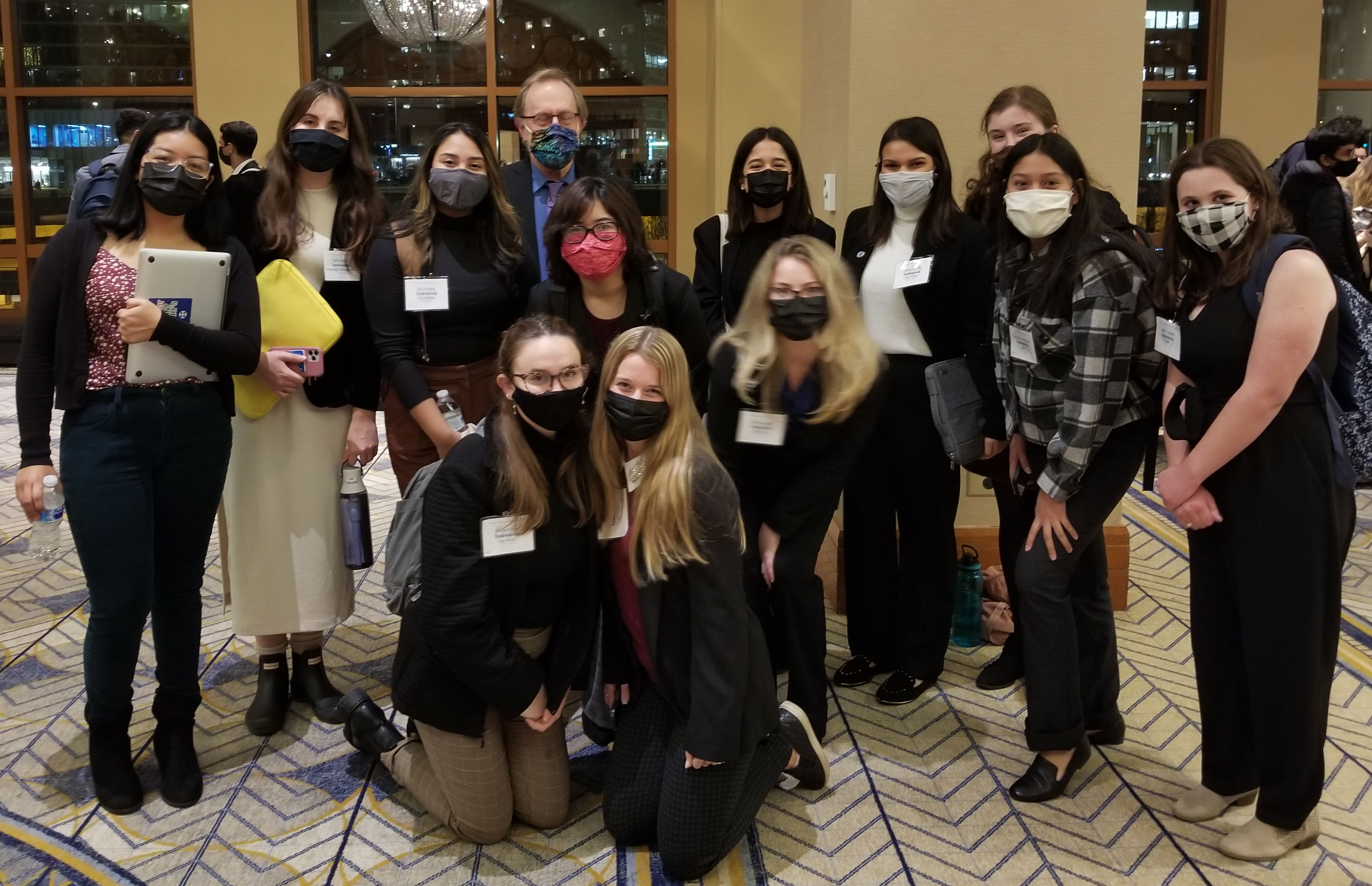UN Simulation Program Gives Global Perspective
Saint Mary’s students shine at recent convention
Over the weekend, two students helped resolve several complex diplomatic issues in Southern Africa, the Middle East, and Cyprus. As delegates to the UN Security Council, they were honored for their work as delegates alongside their peers from Austria.
If it sounds heady for college students, you are right. The students, Molly Mirabelli ’22 and Julia Zusi ’24, both political science majors, were part of the 32nd annual American Model United Nations (AMUN) International Collegiate Conference in Chicago. Their task for the weekend event was to untangle a historic event and provide perspective and recommendations for action.
 “Being in a room with (hundreds of) your peers, having to get to know them, develop proposals and negotiate, that can be overwhelming,” said faculty advisor Marc Belanger, associate professor of political science and global studies. “Molly and Julia displayed their collaborative leadership skills in ways that made the council able to resolve some complex diplomatic issues.”
“Being in a room with (hundreds of) your peers, having to get to know them, develop proposals and negotiate, that can be overwhelming,” said faculty advisor Marc Belanger, associate professor of political science and global studies. “Molly and Julia displayed their collaborative leadership skills in ways that made the council able to resolve some complex diplomatic issues.”
Mirabelli and Zusi were part of a 12-student delegation from Saint Mary’s to attend the AMUN convention. Model UN is a global movement that gives high school and college students a simulation of the UN General Assembly and its various committees. Once each year at its annual convention, students perform an ambassador role for an assigned country while debating topics such as gender equality, climate action, global health, and more.
This year, Saint Mary’s students represented Indonesia at the four-day convention.
“Model UN has been a great experience,” Mirabelli said. “To have an understanding of the United Nations is one thing, but to immerse yourself in a diplomatic simulation is a whole nother. It has been the highlight of my semester.”
Participation in Model UN at Saint Mary’s is part of a non-graded, one-credit course, Belanger said. In order to take part, students must commit up front to attending the convention and get together every Monday night. Here they prepare their materials and build their arguments.
Overall the experience can be life-altering for students, Belanger said. “Model UN is made up of students who are all ambitious and go-getters. Our students learn how it is to work with other people who are more assertive, and learn how to navigate them.”
The goal for students, according to Belanger, is to trust themselves and have fun.
“The thing about the UN is, students who attend (the convention) with a resolution that they really want passed—and doing so just to say their resolution got passed—are really missing the point. The UN isn’t about winning and losing. It’s about very slow, very incremental, very gradual efforts to create compromise across lots of different nations. It’s not useful if you think of it in terms of winning and losing.”
Students in Model UN gain a wide range of skills and information that will serve a lifetime, Belanger said. Through the exercises, students learn public speaking, speechwriting and delivery, research, even how to distill massive amounts of information into a reasonable argument. They practice how to write policies, and learn about cultures they never knew.
Political science major Liliana Lomeli ’25, has already found it helpful. “I believe Model UN is a great way to develop delegation and collaboration skills. It is a conduit to a profession in the Peace Corps and government affairs,” she said. “It has definitely allowed me to expand my comfort zone in being able to communicate with different students at a professional and intellectual level.”
Belanger said, “I tell them, if you’re ever in an interview and asked ‘What did you learn from Model UN?’, you can say that you walked into a room with 200 people you didn’t know and got to work.
“There's a place for every personality in Model UN. There is a place for leadership types, as well as a place for students who quietly listen and have a couple of ideas. There is a place for every skill.”
